
CULTURAL resources
SSFL > RESOURCES > CULTURAL
Burro Flats Painted Cave
The 11.74-acre Burro Flats Site (CA-VEN-1072) is within the Santa Susana Field Lab with deep religious significance and immeasurable cultural value. Local Indigenous tribes used the site, including the Gabrieleno Tongva, Chumash, and Fernandeño Tataviam. The cave served as a sacred space for solstice ceremonies and remains an important religious and cultural site.
The Burro Flats Area is listed on the National Register of Historic Places and is excluded from the cleanup. Formally recognized artifacts found at the SSFL will be protected by “Mitigation Measures” written into the cleanup agreements. These measures are critical to protect sacred indigenous objects.
Similarly, biological mitigation measures will protect endangered species, old-growth oak trees, and rock formations.
In addition to the cultural protections in the SSFL Cleanup Agreements, any formally recognized cultural artifacts onsite are legally protected by the National Historic Preservation Act of 1966, the National Environmental Policy Act of 1969, the Native American Graves Protection, and the Repatriation Act of 1990.
The Burro Flats Site (CA-VEN-1072) is 11.74 acres, the majority of which are located on NASA-administered property in Area II; the remainder is located on Boeing-owned property. Notable features of the Burro Flats Site include pictographs, petroglyphs, mortars, stone tool production sites, and habitation sites. Although the Burro Flats Site has been subject to some disturbance, its overall integrity is good because SSFL operated as a secure research facility, closed to the public, which protected the Burro Flats Site from vandalism and the effects of commercial development.
Tribal elders visit the Painted Cave. Photo from NRHP Application.
Ancient pictographs painted inside Burro Flats cave. Photo from Wikipedia
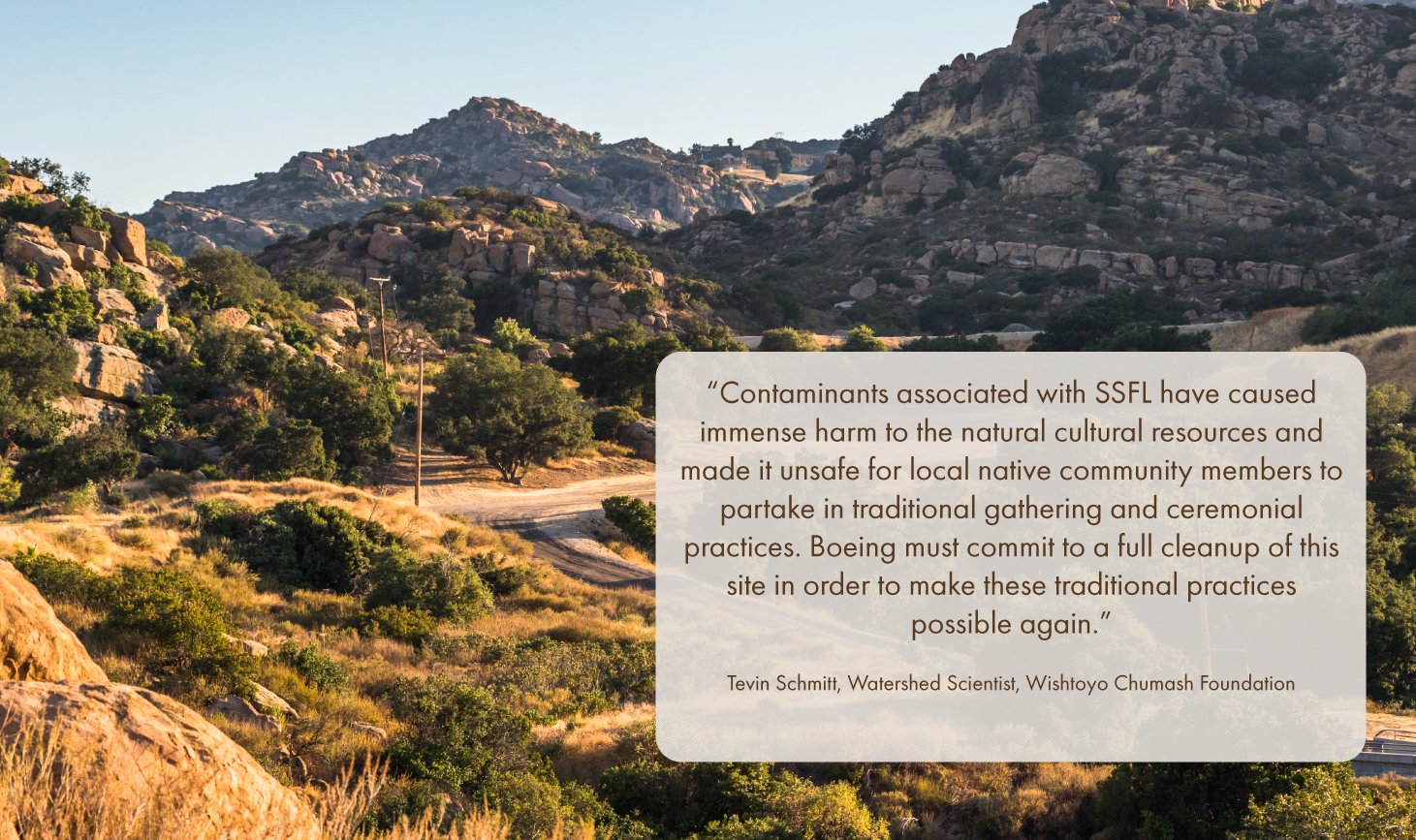
NASA’s ENVIRONMENTAL Injustice
NASA devised a plan that amounts to environmental racism, allowing them to avoid fully cleaning up the Santa Susana Field Lab, despite knowing that this would disproportionately expose Indigenous communities to the site's contamination if their plan succeeded.
2010
The 2010 "AOC" Cleanup Agreement with NASA included "Cultural Exemption" clauses and mitigation measures to protect formally recognized cultural artifacts onsite. These provisions ensured that all formally recognized artifacts would be excluded from the cleanup process to ensure their protection.
2016
NASA prepared to exempt the entire SSFL from cleanup by exploiting the AOC’s cultural cleanup exemptions. NASA hid language in a 2016 proposed Appropriations bill, “to the maximum extent practicable, NASA shall include all Traditional Cultural properties and landscapes as Native American artifacts… for the purposes of the Administrative Order [cleanup agreement].”
2020
The Santa Ynez band of Chumash Indians (the only federally recognized tribe with a connection to the Burro Flats Cave) requested that NASA nominate the entire 2,850 SSFL site as a “Cultural District” to the National Registry of Historic Places. This designation could allow NASA to exempt the entire site from cleanup requirements according to “Cultural Exemption” clauses and potentially shift the financial burden of remediation onto the tribe.
Ultimately, the nomination was denied as the 70-page application did not mention any of the onsite contamination.
2024
NASA and the Department of Energy justify leaving their portions of the SSFL heavily contaminated on cultural and biological exemptions — despite the mitigation measures and protections that would allow a complete cleanup without harming these resources.
PASSFL believes the Responsible Parties should take immediate action to formally commit to returning the entire 2,850-acre Santa Susana Field Lab to the Indigenous people. However, this transfer should only happen after a full cleanup is completed and the land is safely restored to its natural, uncontaminated state—ready for its rightful stewards.
RELATED Articles
Boeing’s false narrative
Boeing’s Land Easement limits Indigenous activity onsite
Boeing donated their portion of the Santa Susana Field Lab to the North American Land Trust, saying this would make the land more accessible to local native tribes. However, restrictions in the easement could prohibit many of their cultural and religious activities at the site.
No overnight stays.
No structures are allowed for housing or camping of any type.
No hunting or gathering.
No fishing.
No smudging or basket weaving with onsite biological material.
No drinking or use of the water (ground, surface, etc.)
If Boeing were to commit to the complete “background” cleanup, the site would again be safe for the Indigenous people to use without risk of exposure.
Boeing’s Recreational cleanup would put Indigenous people at higher risk
Boeing argues that a full "background" cleanup would harm the site's biological and cultural attributes. Instead, they promote a "Recreational" cleanup as a more responsible approach, claiming it would minimize soil disturbance.
However, Boeing fails to mention that this lesser cleanup would leave the soil heavily contaminated with toxic heavy metals, persistent chemicals, and radioactive waste. Additionally, by opting for the Recreational cleanup standard, Boeing would save nearly a billion dollars in cleanup costs—at the expense of public health and environmental safety.
Boeing also doesn’t mention that according to their own report; there are portions of their property that are so contaminated that 96 out of 100 people would get cancer if they lived onsite and ate the produce there.
A recreational cleanup scenario would put indigenous people at a disproportionately high risk of exposure to the site’s contamination.
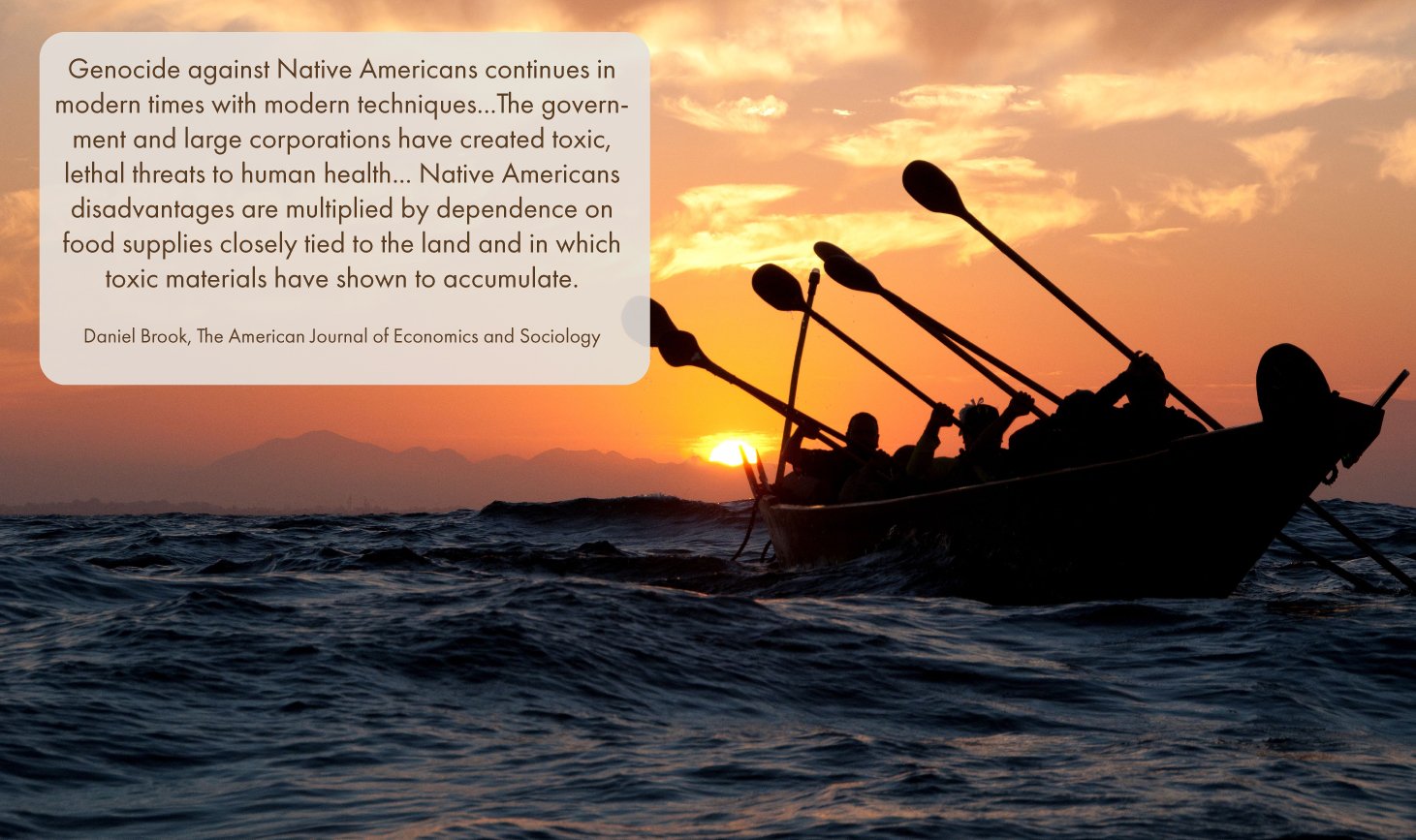
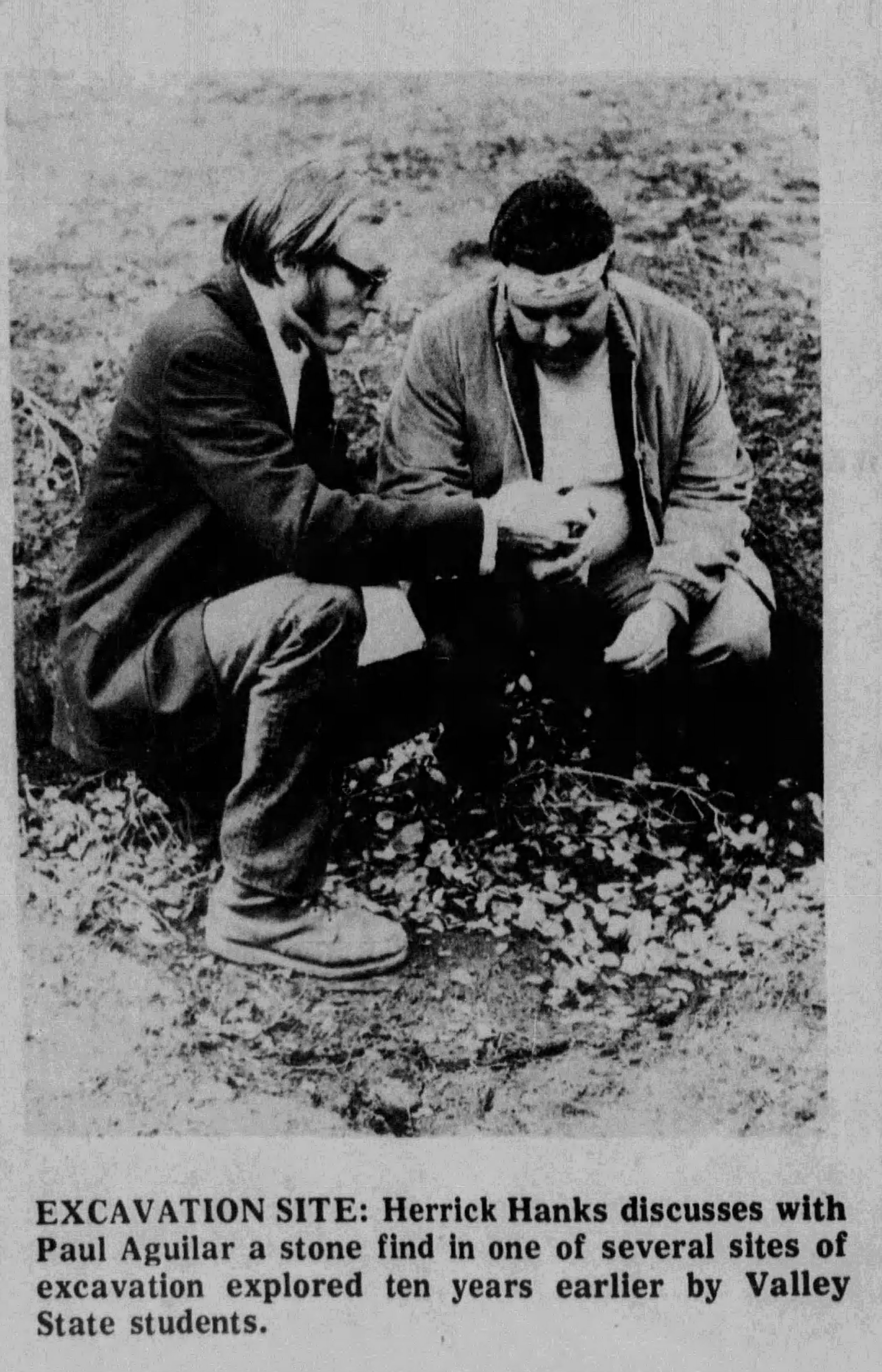
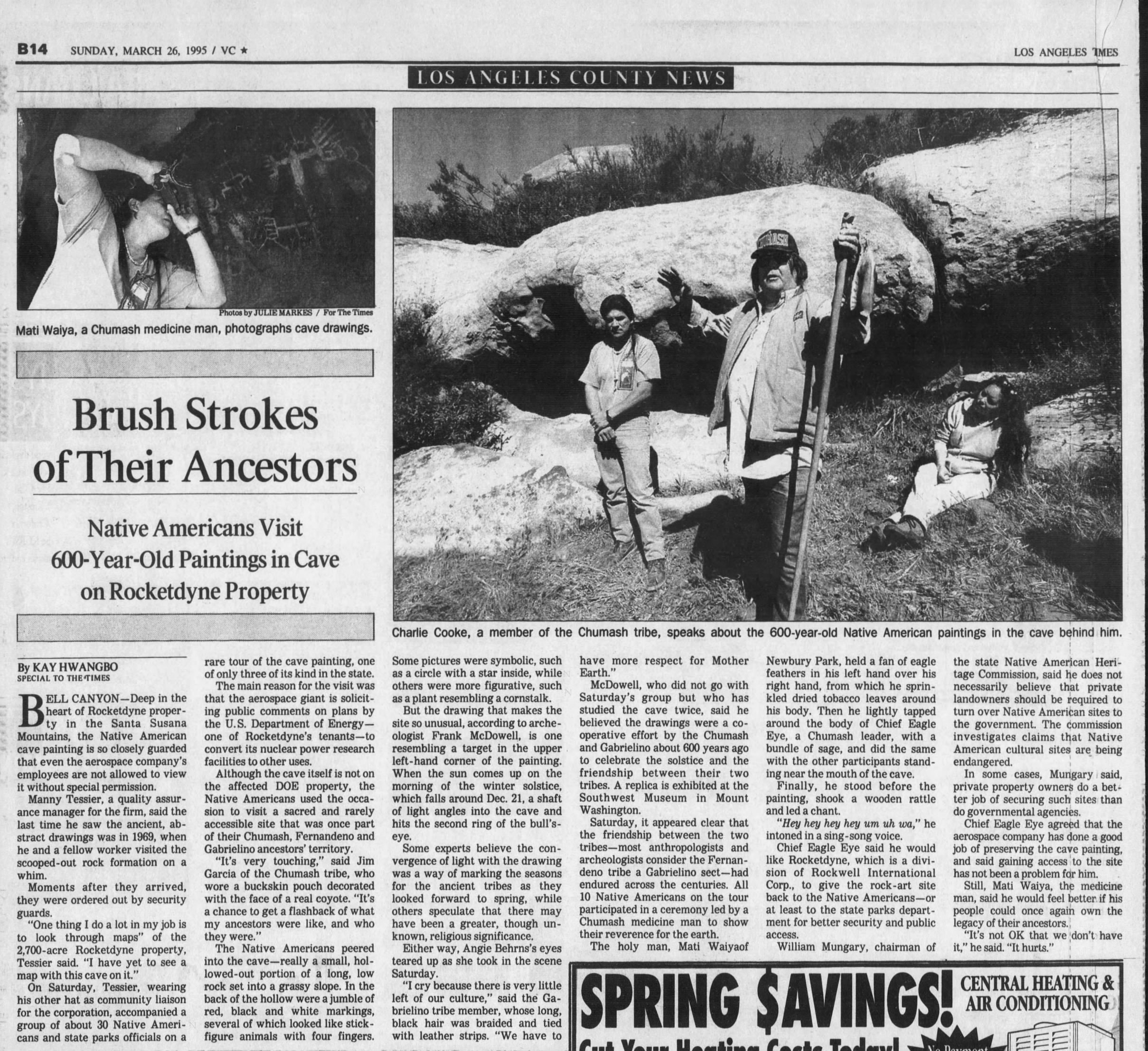
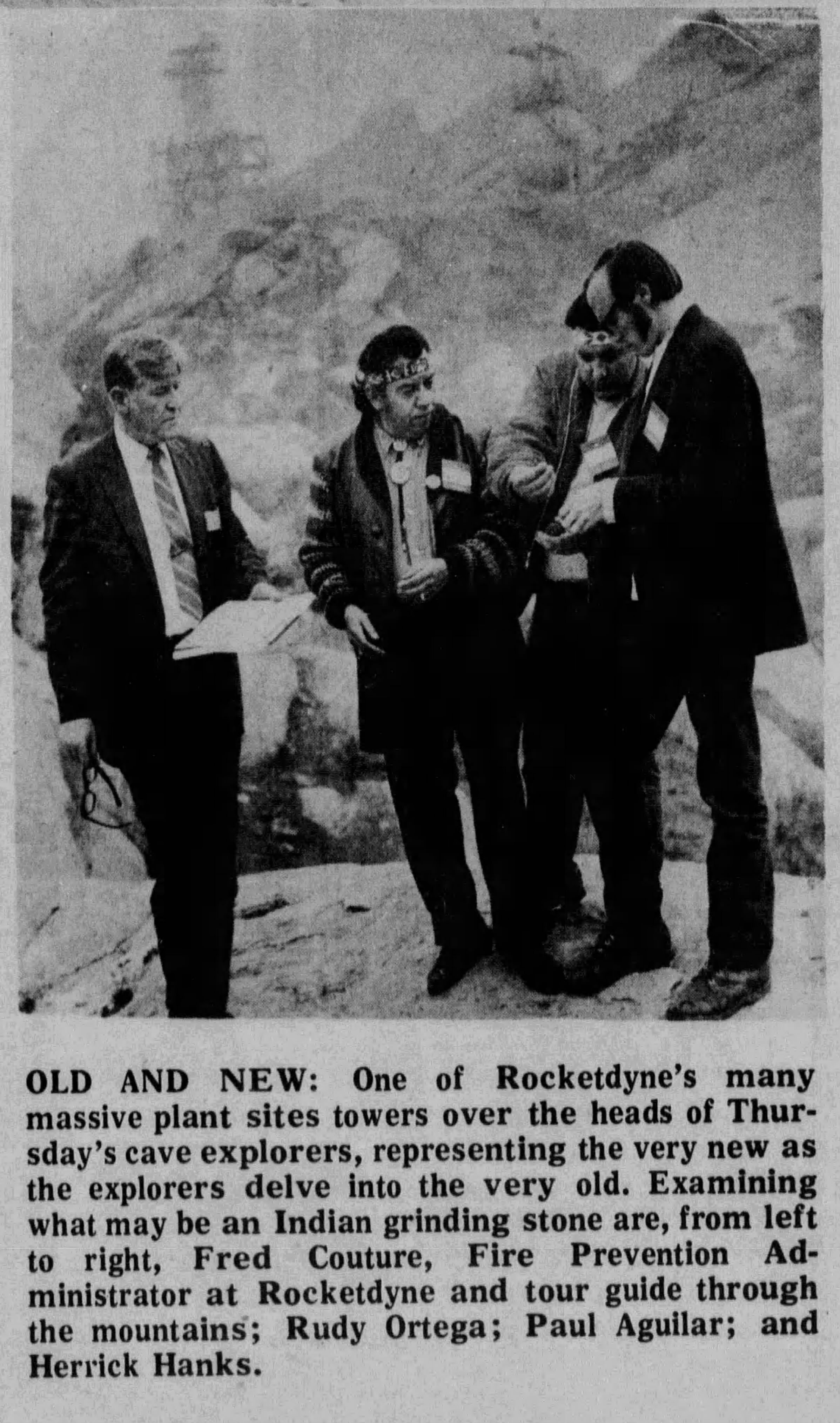


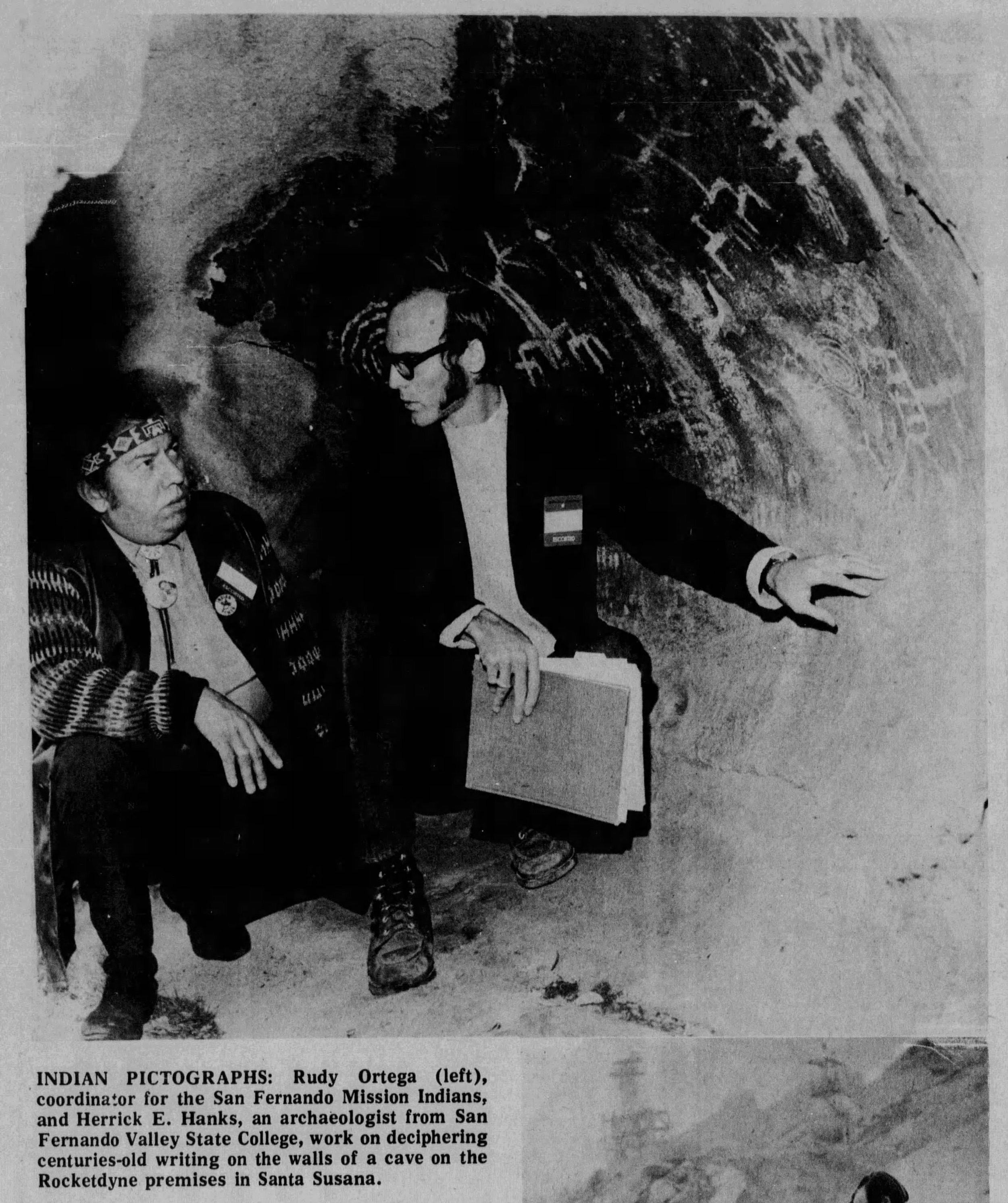
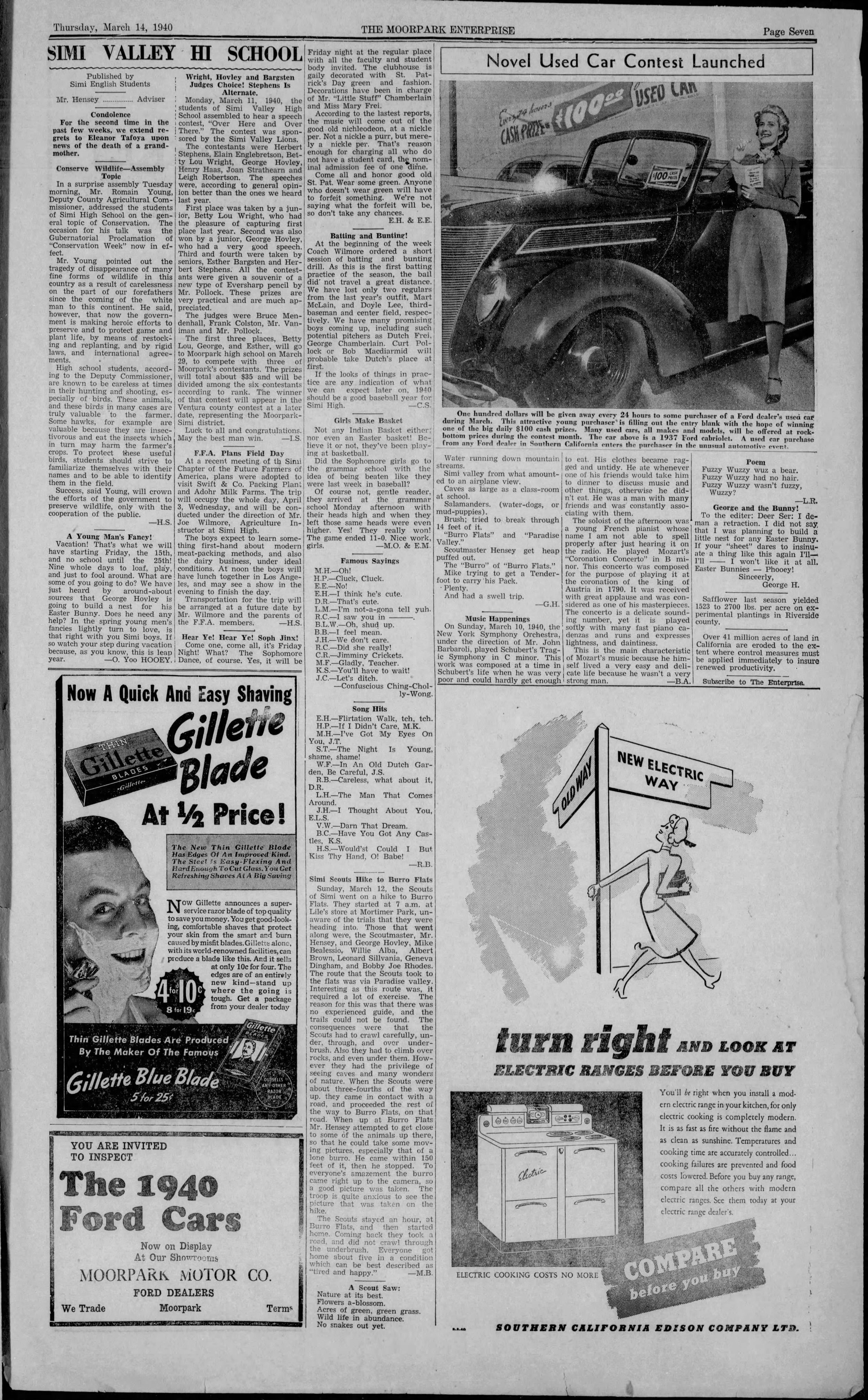
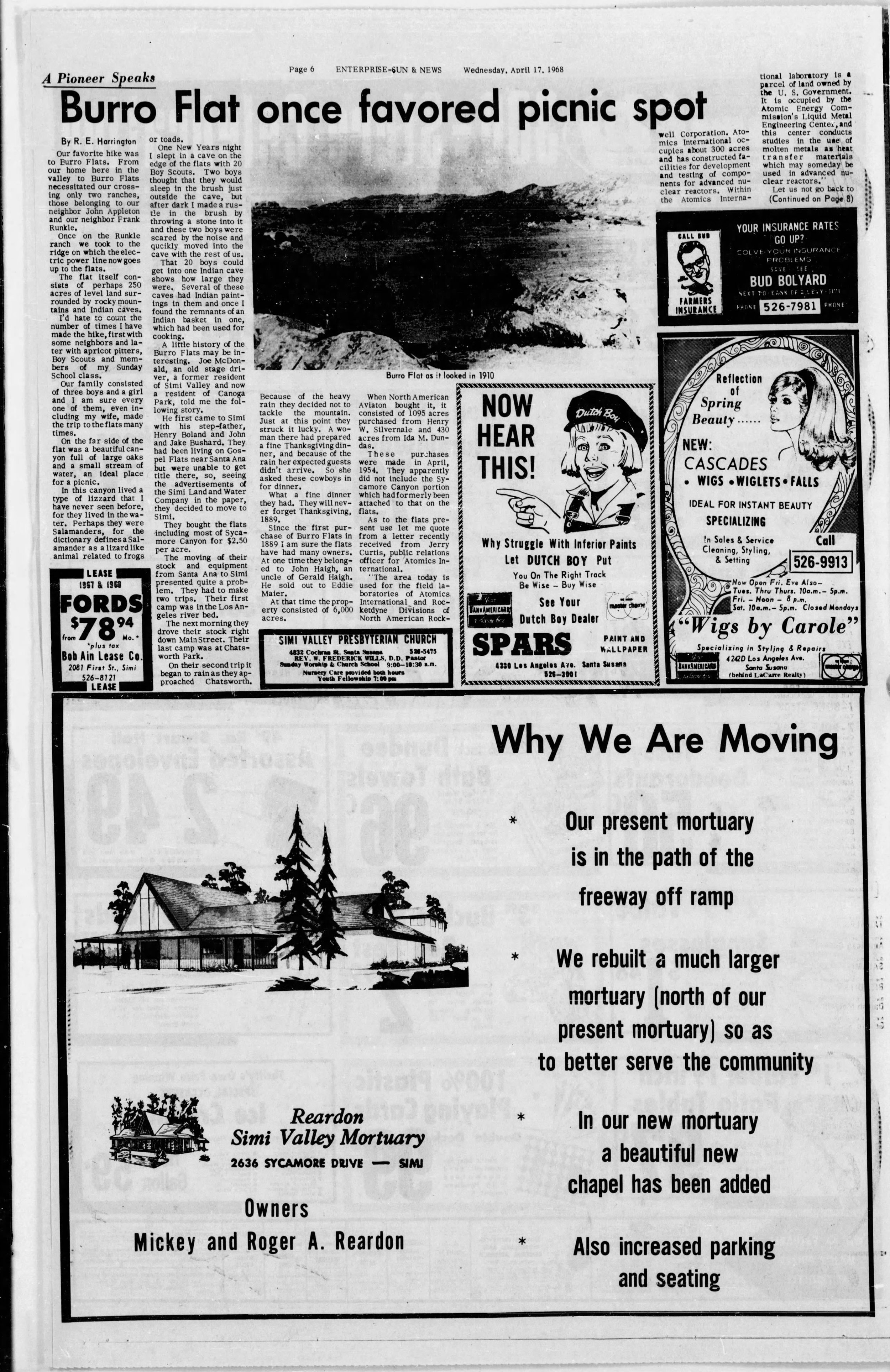
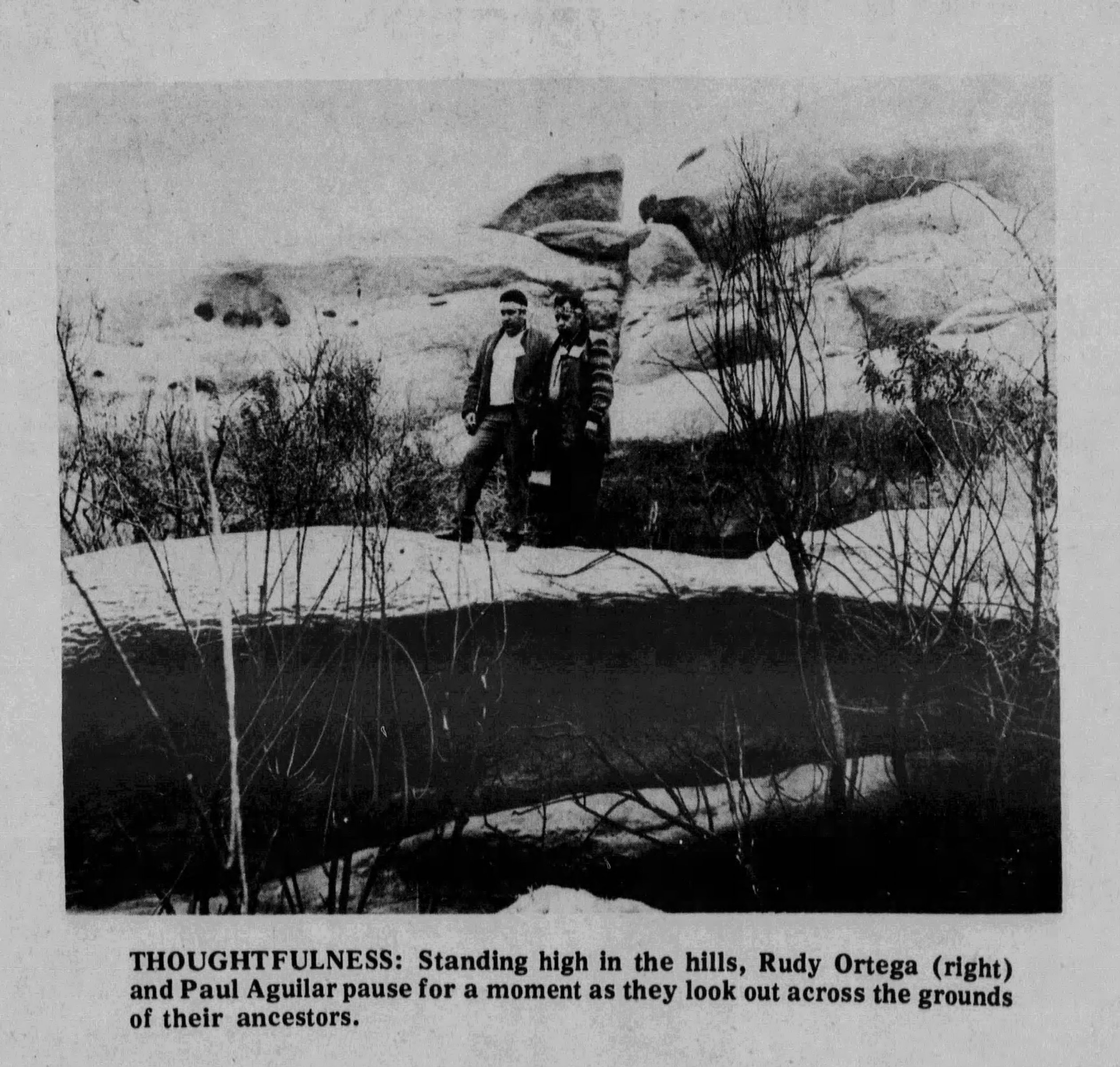
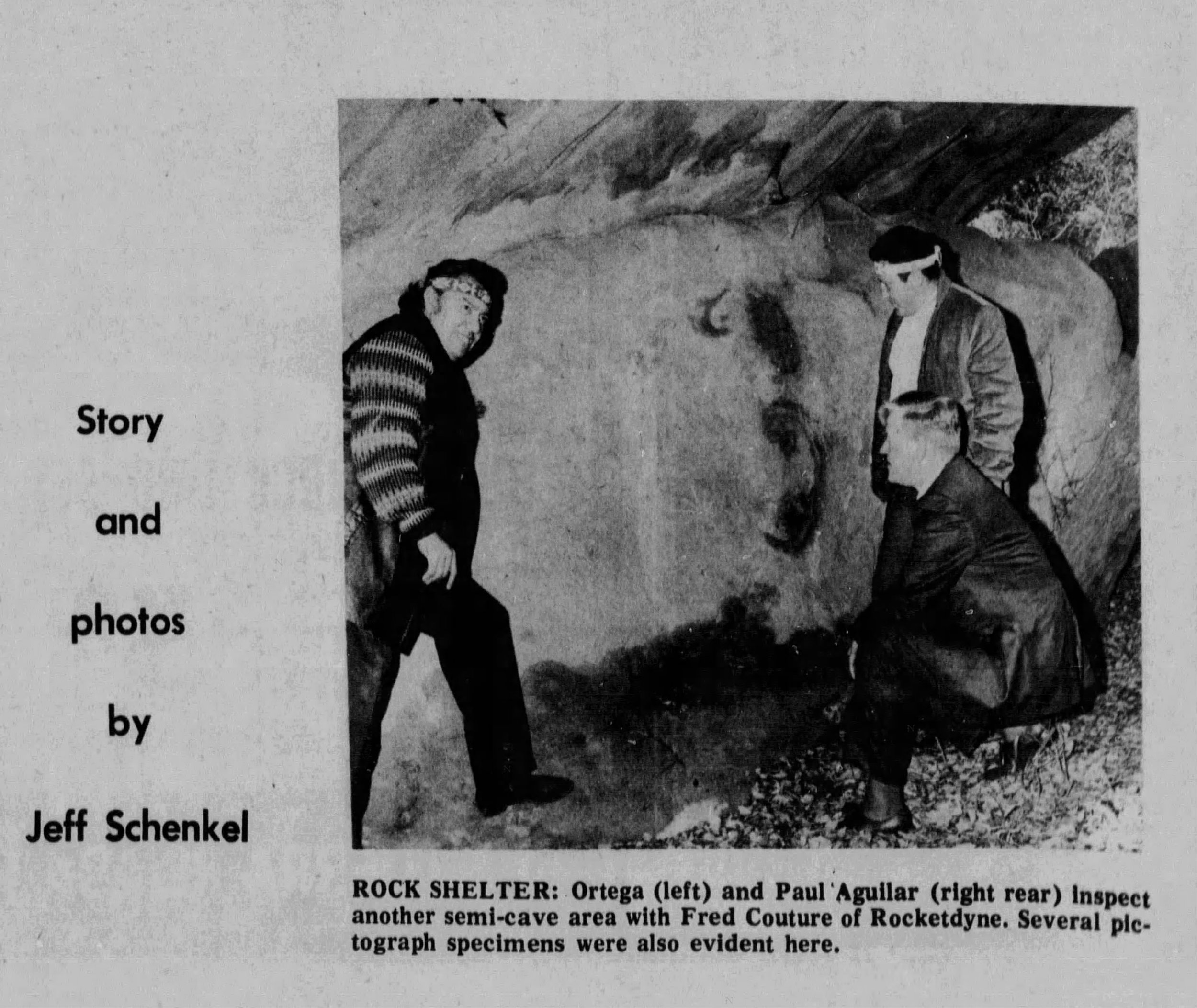
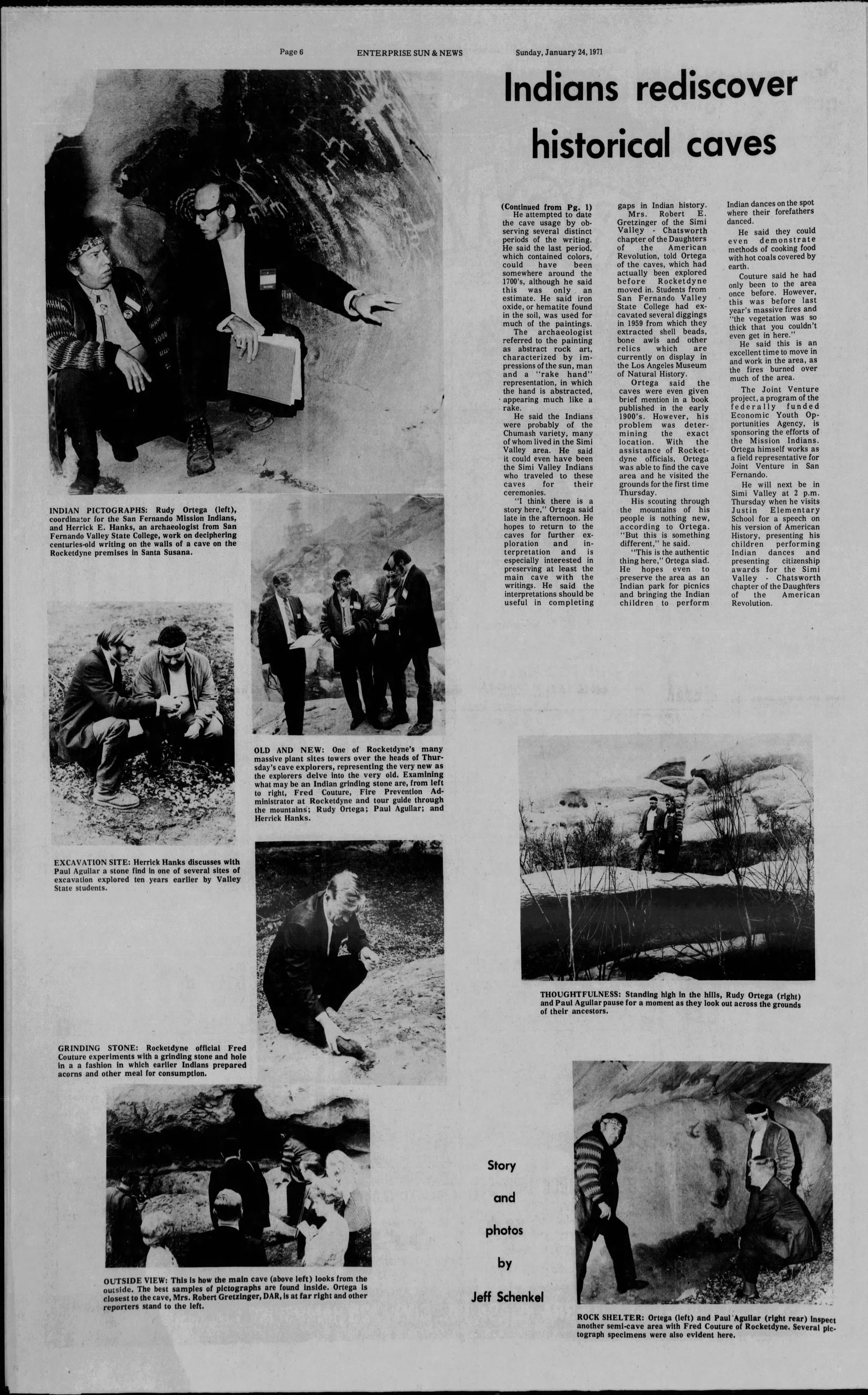
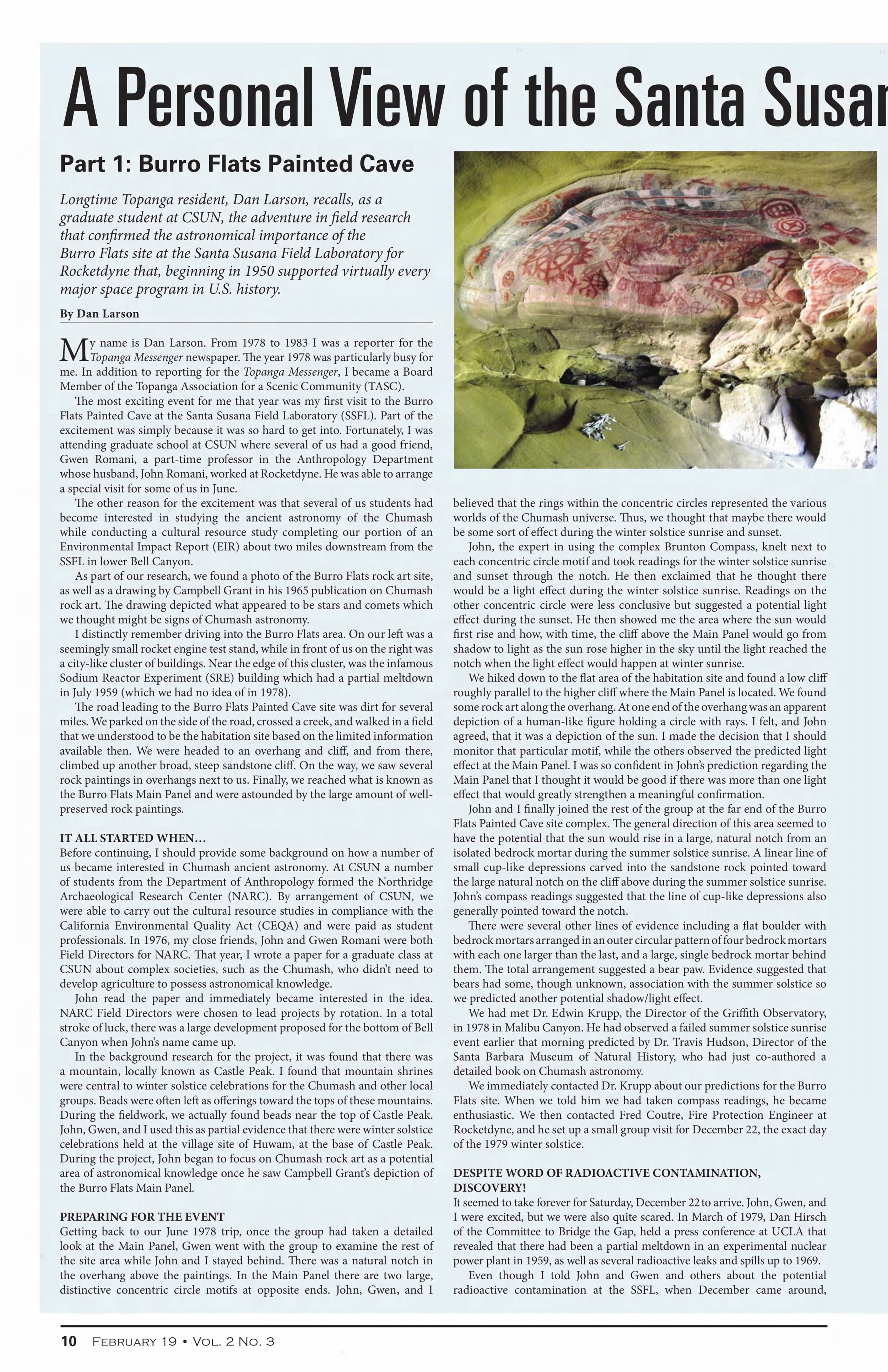

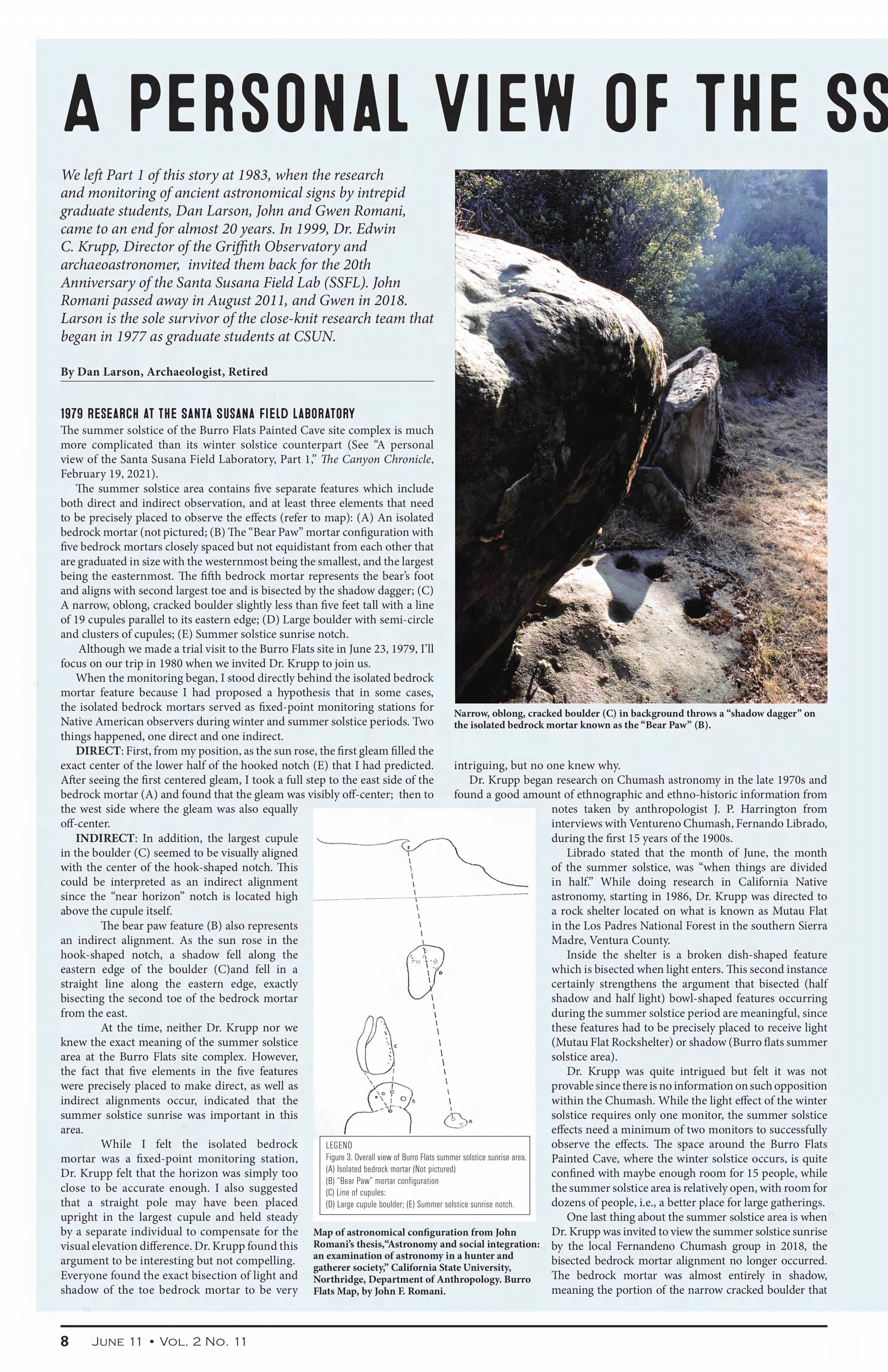
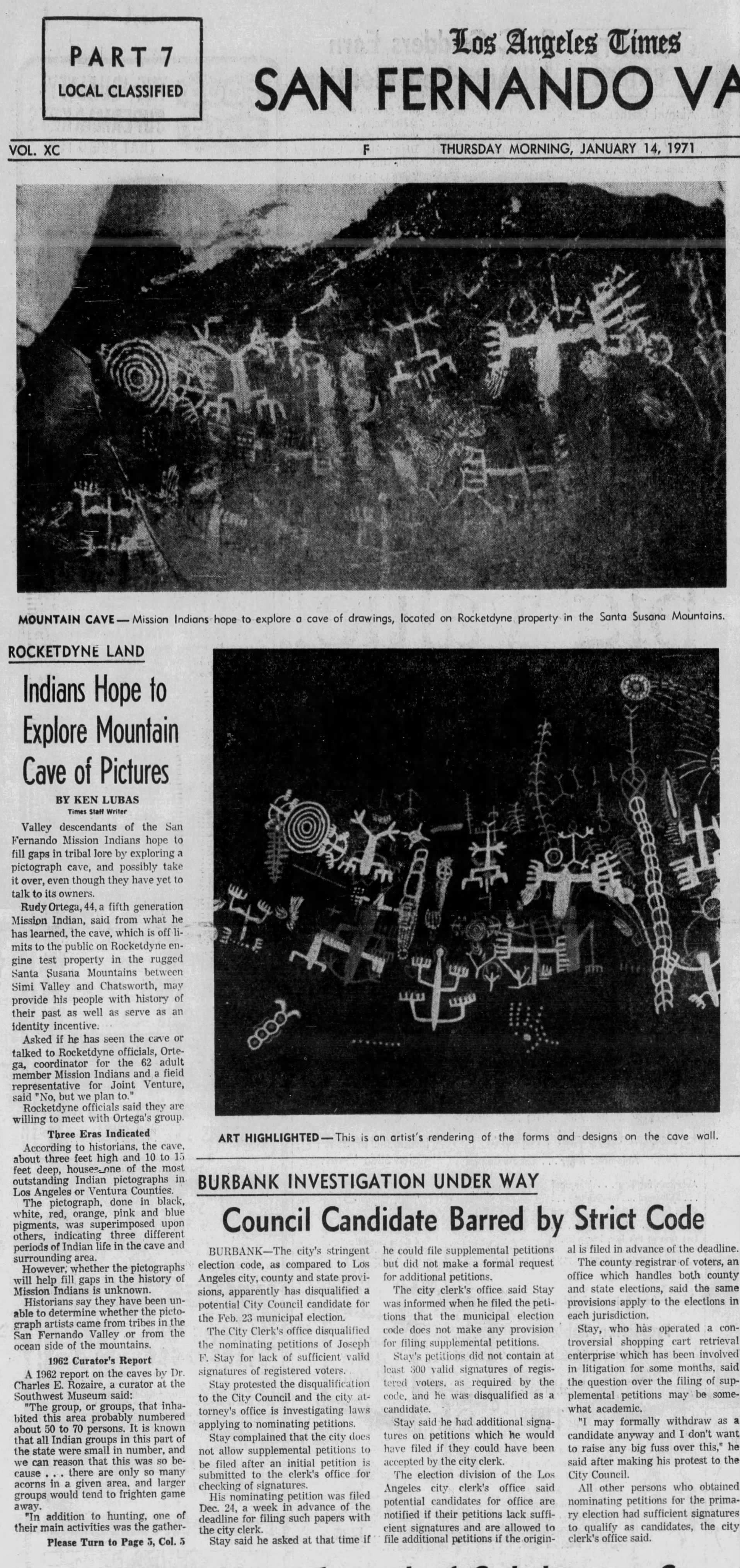
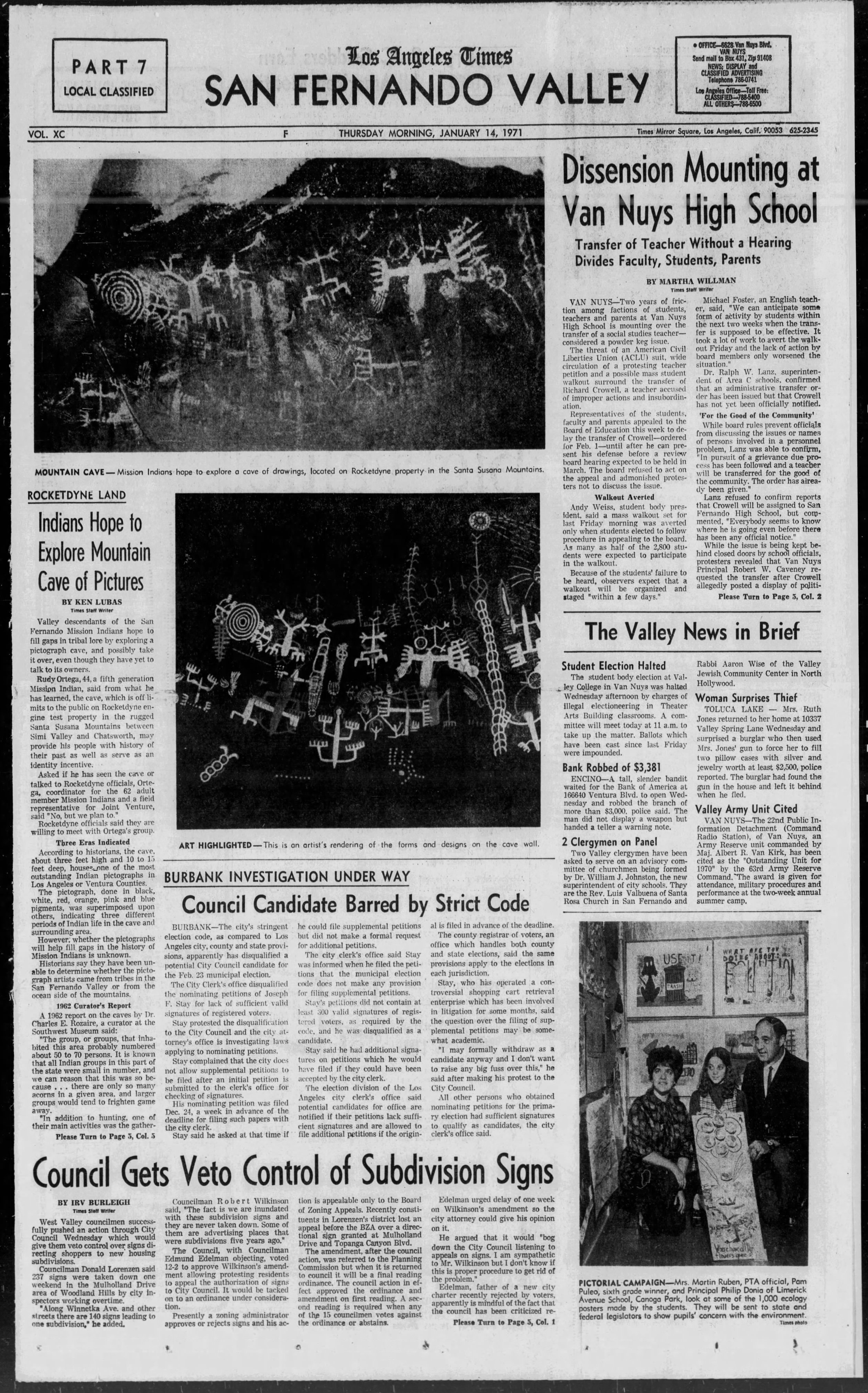
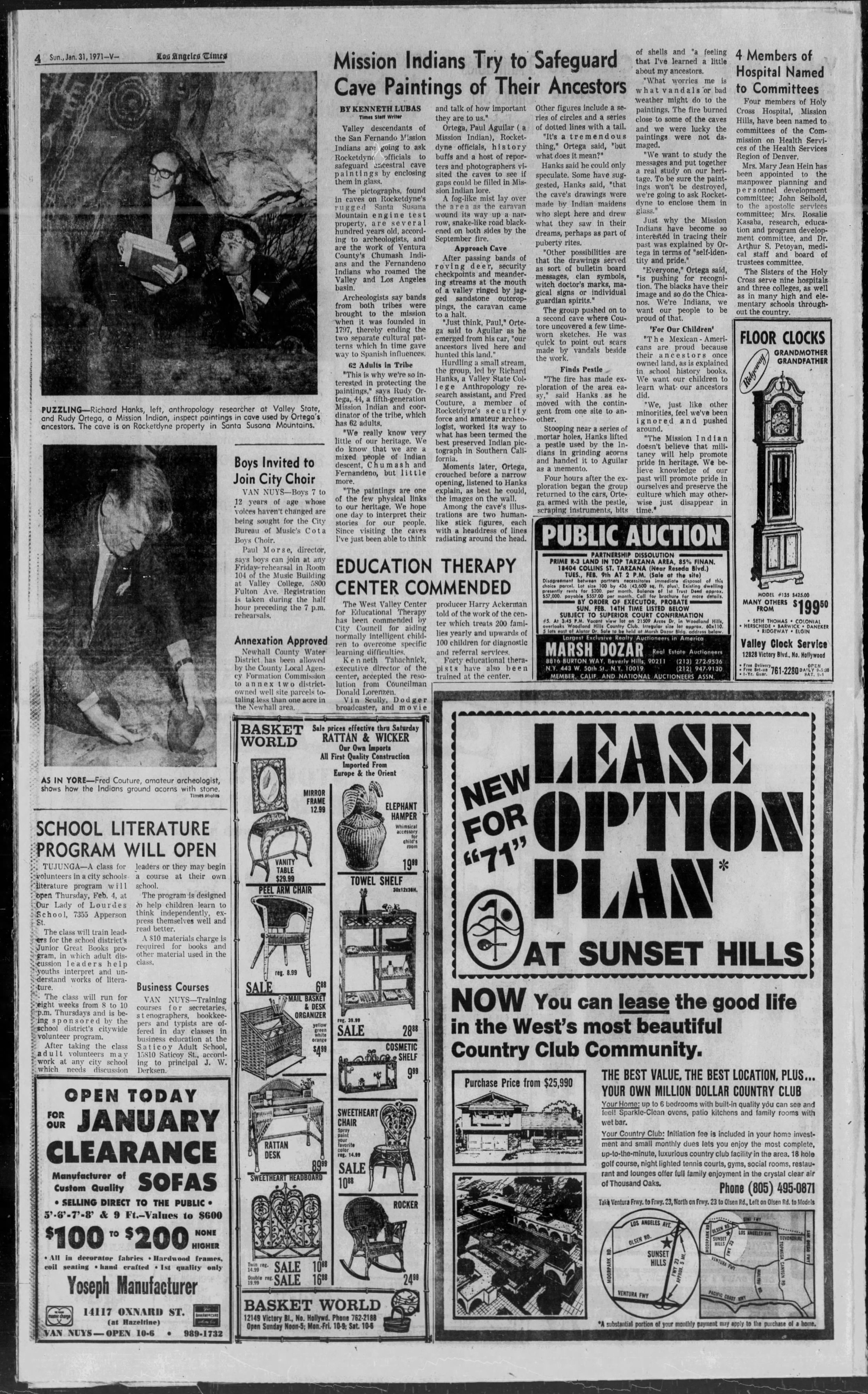


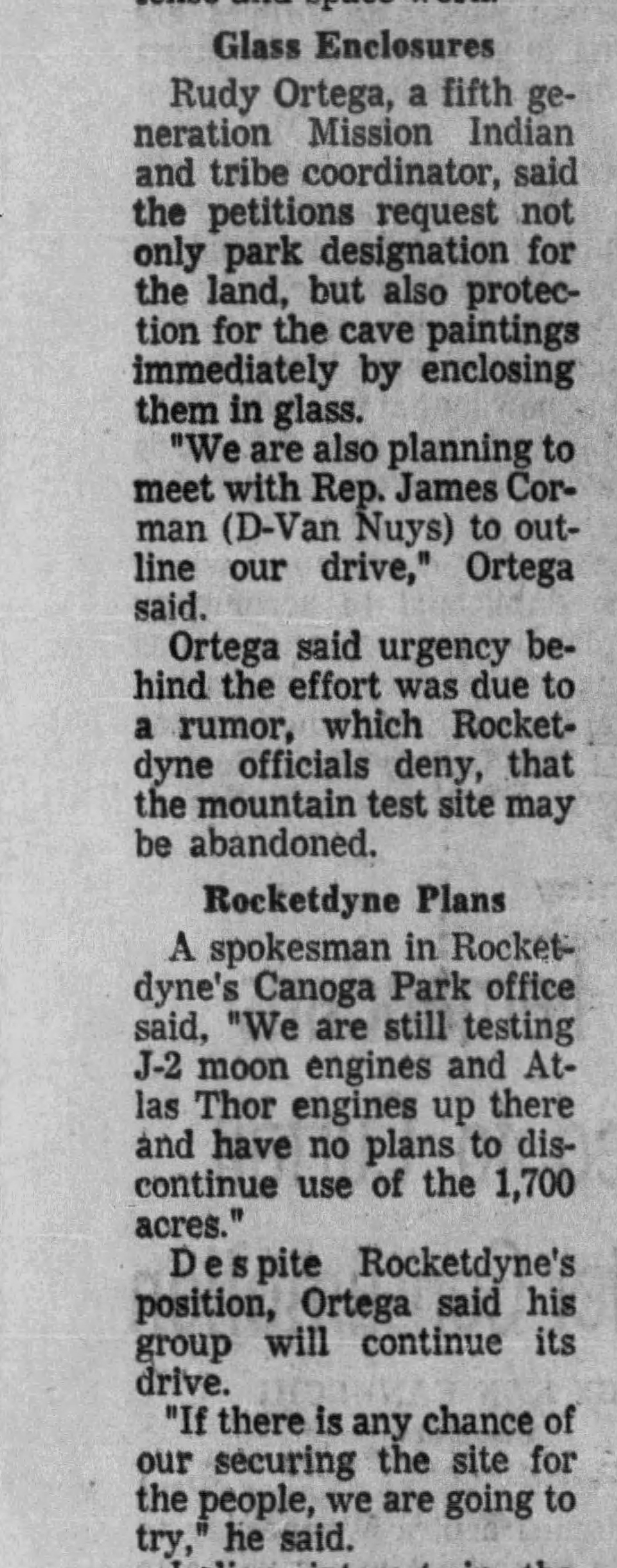

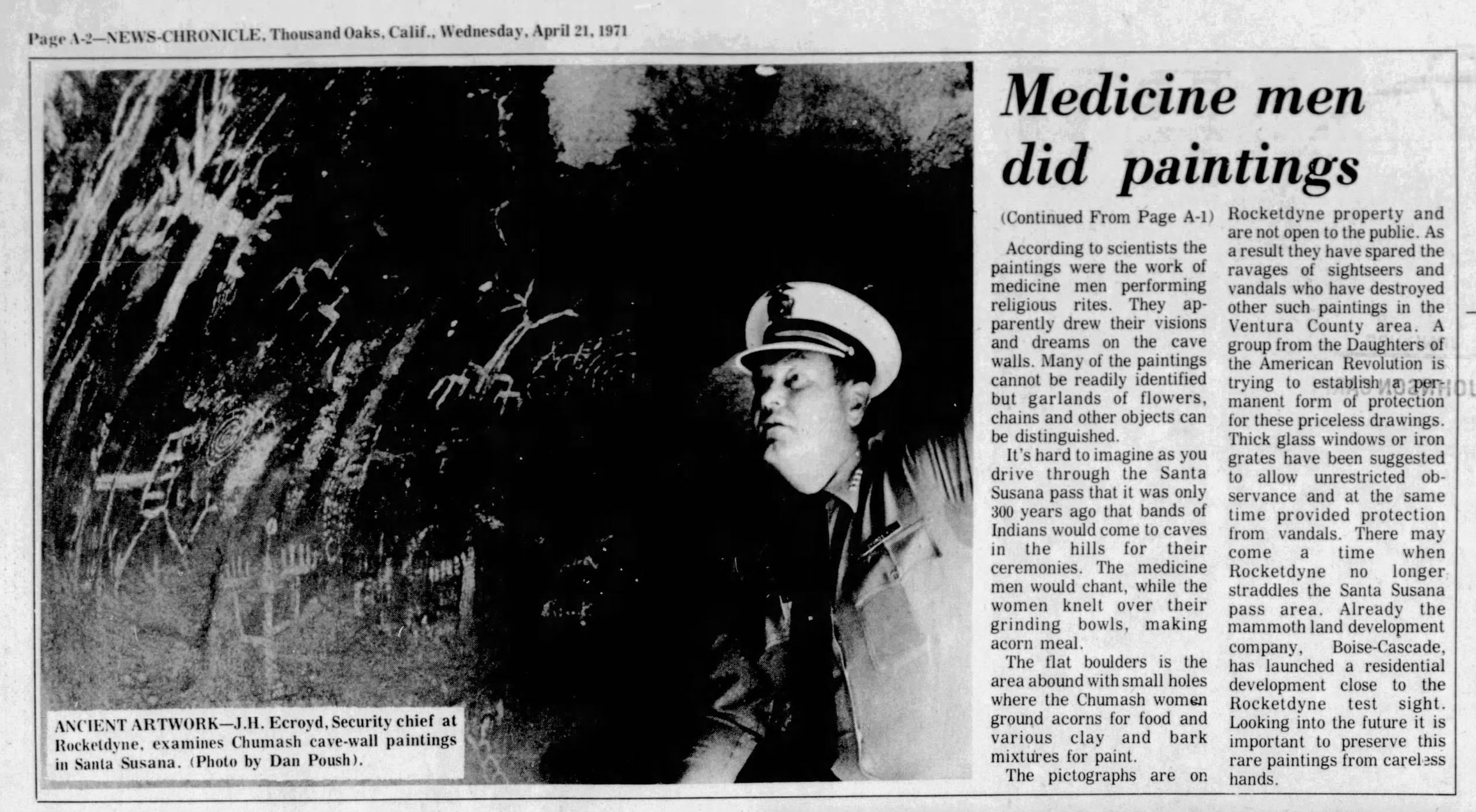
Burro Flats Timeline
2020
State Historic Preservation Officer (SHPO) reduces the protected acreage surrounding the Burro Flats Painted Cave as it did not quality as a “recognized” cultural artifact.
NASA Draft SEIS 3.1.1.3.1 Burro Flats Site (CA-VEN-1072) “Researchers have since suggested that the 1976 boundary of the site does not adequately reflect the number, density, and distribution of loci associated with the site. An updated nomination includes four additional loci and reduces the overall site footprint from 25.02 acres to 11.74 acres… updated nomination is currently under review with the California Office of Historic Preservation (SHPO).
NASA nominates the entire 2,850 acres of the Santa Susana Field Lab as a “cultural district” to the National Registry of Historic Places without first completing their 2010 comprehensive cleanup obligations.
United States Department of the Interior: NASA’s “Burro Flats Cultural District” Application to the National Registry of Historic Places.
2019
The Santa Ynez band of Chumash request to acquire NASA’s portion of the SSFL is still pending.
In the Bureau of Indian Affairs letter to NASA, November 27, 2019, Santa Ynez Chumash Chair wrote, “The request for excess property by tribe/interior is still pending.” (NASA final SEIS Appendix compiling public comments, pdf page 43)
2017
Boeing’s Land Easement Limits Indigenous Activity
Boeing donated their portion of the Santa Susana Field Lab to the North American Land Trust, saying this would make the land more accessible to local native tribes, including the Gabrieleno Tongva, Chumash, and the Fernandeño Tataviam, but restrictions on the land use would prohibit indigenous people from many cultural and/or religious activities at the site.
No overnight stays.
No structures are allowed for housing or camping or any type.
No hunting or gathering.
No fishing.
No smudging or basket weaving with onsite biological material.
No drinking or use of the water (ground, surface, etc.)
2016
A proposed appropriations bill shows how NASA instends to use the NRHP nomination and the AOC Cultural Exceptions to break all of their cleanup obligations.
From a 2016 proposed Appropriations bill (page 112). “To the maximum extent practicable, NASA shall include all Traditional Cultural Properties and Landscapes as Native American artifacts that are ‘formally recognized’ as cultural resources, for the purposes of the Administrative Order [AOC cleanup agreement].”
In other words, once NASA can get the entire SSFL on the National Registry as a cultural district, they can use the AOC cleanup exemptions on the entire 2,850 acres of the Santa Susana Field Lab, completely evading the cleanup.
2012
In December 2012, NASA received notice from the Santa Ynez Band of Chumash Indians of the tribe’s designation of land, including NASA-administered areas of SSFL, as an Indian Sacred Site (Executive Order 13007, “Indian Sacred Sites”), directs federal land managing agencies to accommodate access to, and ceremonial use of, Indian sacred sites by Indian religious practitioners and to avoid adversely affecting the physical integrity of such sacred sites.
For lands designated as sacred sites, agencies managing federal lands shall:
Accommodate access to and ceremonial use of Indian sacred sites by Indian religious practitioners and
Avoid adversely affecting the physical integrity of such sacred sites. Where appropriate, agencies shall maintain the confidentiality of sacred sites.
2010
The 2010 “AOC” cleanup agreements, written by physics Nobel Laureate Dr. Steven Chu, include “cultural exceptions” in order to protect all formally recognized artifacts.
The cleanup agreement that NASA signed (NASA AOC, page 43) has an exemption to protect all “formally recognized cultural artifacts.” That would include the painted cave, as well as any new discoveries such as burial remains, etc. But they must be “formally recognized” to be exempt from the cleanup. The items would be evaluated and categorized by accredited archeologist and ultimately, the California Office of Historic Preservation (SHPO).
Cultural Resources Identification Survey from the Department of Energy.
2009
NASA’s portion of the SSFL is declared “excess” federal property, allowing the transfer of the land to Native American tribes.
Ventura County Star: NASA declares its portion of the Santa Susana Field Lab “excess” federal property after the space shuttle program ended. NASA’s portion can now be transferred to a federally recognized tribe.
1995
Local tribes are allowed a visit to the Burro Flats Painted Cave, wish there was better security and public access.
Los Angeles Times: Local tribes are given the rare opportunity to visit the Burro Flats Painted Cave. Chief Eagle Eye said he would like Rocketdyne, which is a division of Rockwell International Corp., to give the rock-art site back to the Native Americans--or at least to the state parks department for better security and public access.
1976
The “Burro Flats Painted Cave” and 25 acres surrounding it were added to the National Registry of Historic Places.
National Registry of Historic Places (NRHP) gives additional protection to the site.
The Burro Flats Site was first systematically recorded in 1959 (Rozaire, 1959) and was resurveyed in 1972 by Franklin Fenenga (Fenenga, 1972). The boundary of the site was enlarged to 25.02 acres by the Ventura County Heritage Board in 1975 and was accepted by the National Park Service (NPS) and listed on the NRHP in May 1976. Researchers have since suggested that the 1976 boundary of the site does not adequately reflect the number, density, and distribution of loci associated with the site (Corbett et al., 2016a). An updated nomination includes four additional loci and reduces the overall site footprint from 25.02 acres to 11.74 acres, resulting from data gathered during pedestrian surveys (Corbett et al., 2013, 2016b) and the testing of loci boundaries in some locations (Corbett et al., 2016b). The updated nomination is currently under review with the California SHPO. NASA FEIS
1971
Local Tribes reconnect with their heritage at the Burro Flats Painted Cave.
Los Angeles Times The Mission Tribes asked NASA to protect the Burro Flats Painted Cave from erosion and vandalism by encasing the petroglyphs in glass. NASA rejected the request.







